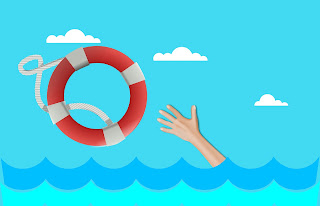Important Dates
During National Safety Month, individuals and organizations participate by making efforts to reduce the leading causes of unintentional injury and death at work, on the road, and in homes and communities."
Road Safety Tips
- Teach your children how to cross a road safely:
- Find a safe place to cross, then stop.
- Look right, left, right and listen for vehicles.
- If traffic is coming, wait for it to pass.
- Walk straight across the road.
- Keep looking and listening for traffic while you cross.
- Your child will learn about pedestrian safety by watching you, so use safe behavior around cars, roads and car parks.
- Take advantage of car seat checks and events to make sure your car seat is properly installed for long trips and in case of an accident.
- Some general driving tips to keep you and your family safe on the road from Safety.com:
- Buckle up.
- Put down the cell phone.
- Use the left lane for passing.
- Get up to speed on the acceleration ramp.
- Carefully get out of your vehicle after an accident.
- Don't drive too closely.
- Watch your speed.
- Let it go. Avoid road rage.
- Be considerate of tractor trailer drivers.
- Drive defensively. Watch out for other drivers.
- Take breaks over long stretches.
- Drive according to weather conditions.
- Do NOT drive under the influence.
Firework Safety Tips
- The safest way to enjoy fireworks is at a professional display.
- It's best to stay away from areas where nonprofessionals are setting off fireworks.
- Fireworks can cause serious eye injuries, including blindness and starting fires, be cautious.
- Only adults should light fireworks.
- Never use fireworks indoors.
- Be prepared to put out a fire by having a hose or water nearby.
- Light fireworks one at a time.
- Stay away from a firework that has not gone off and never try to relight it.
- Sparklers may seem less dangerous than fireworks, but they get extremely hot — as hot as 1,800°F (982°C), use caution.
Stranger Danger Safety Tips
- Always tell you or their parents where they are going.
- Try not to walk anywhere alone.
- Don't take shortcuts through the woods, a back street or empty lot.
- Bad people do not always look mean or scary.
- Do not get close to strangers.
- Make sure they have room to run.
- Don’t tell their name or address to a stranger.
- Never go with a stranger to help look for a lost pet or play a game.
- Never get into a car with anyone they don’t know.
- If a stranger bothers them, run away and ask an adult for help.
- Know safe places they can go – a police or fire station, the library, a store or a friend’s house.
- If a stranger follows them or grabs for them, yell loud!
- Shout, “I don’t know you!” Fight back and make as much noise as you can.
- If anyone touches them in a bad way, say,
- “NO!” Get away and tell an adult you trust.
- Keep telling until someone listens.
- Tell you or their parents about places they don’t feel safe.
- Talk to you or their parents and come up with a secret code word.
- Never go with anyone unless they know the secret code word.
If your children are old enough to stay home alone, review these tips with them:
- Know how and when to call 911.
- Never open the door to a stranger.
- Never tell anyone on the phone they are home alone.
- Never tell any callers their name, number, or address.
- Hang up right away if they do not like what someone is saying on the phone.
Hot Car Safety Tips
- A child's body heats up three to five times faster than an adult's does.
- A child can die when his temperature reaches 107 degrees F.
- Cars heat up quickly! In just 10 minutes, a car can heat up 20 degrees F.
- Cracking a window and/or air conditioning does little to keep it cool once the car is turned off.
- Heatstroke can happen when the outside temperature is as low as 57 degrees F.
- Some ways to prevent hot car deaths:
- Look in the backseat before you lock your car and leave.
- Keep something you need (like a cellphone, purse, ID badge, left shoe) in the backseat so you will have to look in the back seat.
- Travel with a stuffed animal or something obvious in your passenger seat to remind you that their is a child in the backseat.
- Always lock the car when not using it, even in the garage, so that kids can't get in and overheat.
- Put keys and fobs up and away from children so they cannot get into cars without your supervision and overheat.
- Make a plan with your childcare provider to check in with you if your child does show up.
- If you see something, do something:
If the child is not responsive or is in pain, immediately:
Call 911.
Get the child out of the car.
Spray the child with cool water (not in an ice bath).
If the child is responsive:
Stay with the child until help arrives.
Have someone else search for the driver or ask the facility to page them.
“The biggest mistake people make is thinking it can’t happen to them,” Fennell says.
RECALLS:
May 25, 2023 CPSC; The Good and the Beautiful recalled its Math 1 and Math 3 Boxes with metallic whiteboards because the whiteboard attached to the boxes can become detached exposing sharp edges, posing a laceration hazard. Units: About 103,200 (an additional ~ 1,820 in Canada).May 25, 2023 CPSC; Bunch Bikes recalled its Preschool Electric Bicycles because the paint on the recalled electric bikes contains levels of lead that exceed the federal lead paint ban, posing a risk of lead poisoning and adverse heath issues if ingested by young children. Units: About 150.
May 25, 2023 CPSC; Juratoys recalled its Janod Sweet Cocoon Activity Tables because the table contains a silver metal bell which can detach from its metal arch, posing a choking hazard to young children. Units: About 5,080 (an additional ~1,030 in Canada).
May 18, 2023 FDA; Novis PR LLC recalled its G-Supress DX Pediatric Drops because some cartons of the product have been found to contain an incorrect product, an anesthetic/analgesic instead of cough suppressant, expectorant, and nasal decongestant drops. The incorrect product puts children at risk of serious adverse events, including alcohol toxicity.
May 18, 2023 CPSC; Empower Brands recalled its PowerXL Stuffed Wafflizer waffle makers because hot pieces of the waffle or stuffing can be expelled from the waffle maker during use or upon opening the product, posing a burn risk to consumers. Units: About 456,000.
May 18, 2023 CPSC; Target recalled its Threshold Glass Jar Candles because the jar can crack or break during use, posing laceration and burn hazards. Units: About 4.9 million.
May 18, 2023 CPSC; Kell Electronic recalled its Personal Chiller Mini Fridge Gamer Beverage Refrigerators with LED Lights because the power cord can overheat, posing a burn hazard. Units: About 25,000.
May 18, 2023 CPSC; Cycle Force recalled its Ventura Adult Bike Helmets because they do not comply with the positional stability requirement of the CPSC federal safety standard for bicycle helmets, posing a risk of head injury. Units: About 1,750.
May 18, 2023 CPSC; DKB Household recalled its Cole & Mason 505WEG Pepper Mills exclusively sold at Wegmans Food Markets because the pepper mills contain a metal grinding mechanism that lets off metal “shards” for the first 10 grinds, posing a laceration hazard. Units: About 9,340.
May 18, 2023 CPSC; Acme United recalled its PhysiciansCare Allergy, Allergy Plus and Cold and Cough Tablets because the products contain diphenhydramine hydrochloride and acetaminophen but is not child resistant, posing a risk of poisoning if the contents are swallowed by young children. Units: About 2,400.
May
11, 2023 CPSC; Peloton recalled its Peloton Bikes Model PL01 because the
bike’s seat post assembly can break during use, posing fall and injury hazards
to the user. Units: About 2.2 million.
May
11, 2023 CPSC; American Woodmark recalled its Continental Cabinets and
Hampton Bay Kitchen Wall Cabinets because the cabinets can detach from the
wall, posing an impact hazard. Units: About 235,000.
May
11, 2023 CPSC; Advanced EV recalled its Advent 4F, Advent 4FL, Advent 6 and
Advent 6L golf carts because the cart’s front seat can become loose due to
missing rubber grommets, posing fall and injury hazards to operators and/or
passengers. Units: About 2,500.
May
10, 2023 FDA; BearCare recalled its rechargeable Walnut Wearable Smart
Thermometer intended for chest temperature monitoring of children ages
0-6 because they have received consumer complaints of minor to severe skin
burns and skin irritation in children.
May
5, 2023 FDA; SD Biosensor, Inc. recalled its Pilot COVID-19 At-Home Tests
because they potentially contain harmful bacteria, posing a risk of serious
illness if the user is directly exposed to the liquid in the tube through
misuse or spillage could potentially lead to serious illness.
May
4, 2023 FDA; Family Dollar recalled its Advil over-the-counter drug
products because they were stored by Family Dollar outside of labeled temperature
requirements.
May
4, 2023 FDA; Akorn updated its recall of various human and animal drug
products because the company has ceased and shut down all operations, including
the quality program to assure that products meet the identity, strength,
quality, and purity standards.
May
4, 2023 CPSC; Positec recalled its Blue Ridge Utility Knives because the
knife can become unlocked and the blade can protrude only while in the original
packaging, posing a laceration hazard. Units: About 36,250.
May
4, 2023 CPSC; The Company Store recalled its Children’s white robes because
they fail to meet the federal flammability standards for children’s sleepwear,
posing a risk of burn injuries to children. Units: About 930.
May
4, 2023 CPSC; CultureFly recalled its L.O.L. Surprise! Trick or Treat
subscription boxes sold with Metal Doll Pins because the paint on the pins
contains levels of lead that exceed the federal lead paint ban, posing a lead
poisoning hazard. Units: About 6,600.
May
4, 2023 CPSC; ODL recalled its Severe Weather Doorglass Inserts because the
adhesive bond holding the doorglass inserts can become separates from the door
causing a risk of injury and property damage from windborne debris. Units:
About 39,100.
May
4, 2023 CPSC; Ricky Powersports recalled its Youth All-Terrain Vehicles
(ATVs) because they fail to comply with mandatory requirements, including
parking brake requirements and safety requirements of ATVs intended for
children 10 years of age and older, posing a risk of serious injury or death.
Units: About 570.
May
4, 2023 CPSC; Walker Edison Furniture recalled
its Twin Over Twin Bunk Beds because the wooden slats supporting the bunk beds
can break while in use, posing fall and impact hazards. Units: About 121,000.
May 4, 2023 NHTSA; Baby Trend, Inc. recalled
its Hybrid 3-in-1 Combination Booster Seat-Desert Blue child seats because the
latch assembly webbing that secures the child restraint system to the lower
anchorages may fray, which can reduce the strength of the webbing and fail to
properly restrain a child in a crash. Units: About 2,600.





































